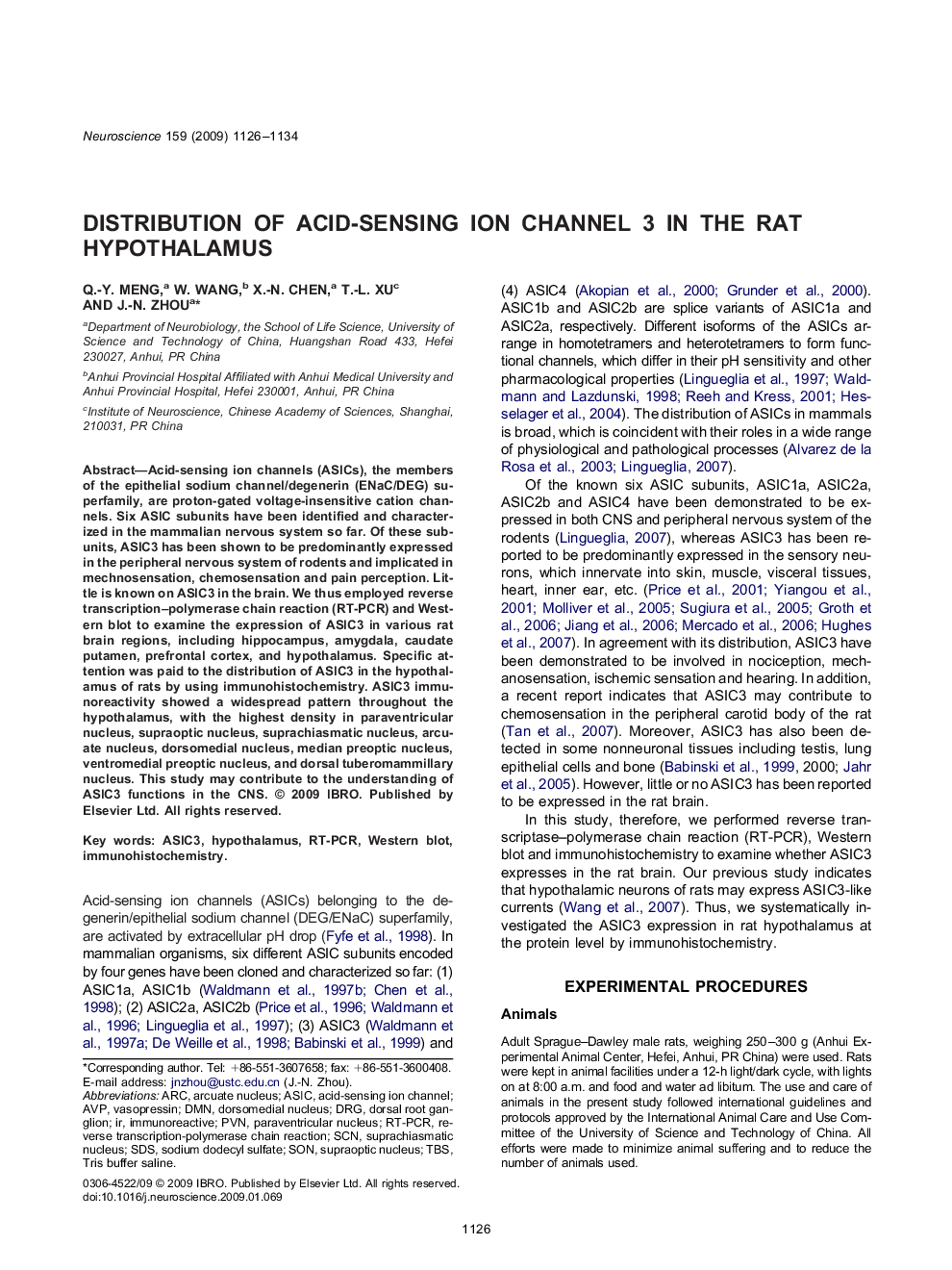| Article ID | Journal | Published Year | Pages | File Type |
|---|---|---|---|---|
| 4340142 | Neuroscience | 2009 | 9 Pages |
Acid-sensing ion channels (ASICs), the members of the epithelial sodium channel/degenerin (ENaC/DEG) superfamily, are proton-gated voltage-insensitive cation channels. Six ASIC subunits have been identified and characterized in the mammalian nervous system so far. Of these subunits, ASIC3 has been shown to be predominantly expressed in the peripheral nervous system of rodents and implicated in mechnosensation, chemosensation and pain perception. Little is known on ASIC3 in the brain. We thus employed reverse transcription–polymerase chain reaction (RT-PCR) and Western blot to examine the expression of ASIC3 in various rat brain regions, including hippocampus, amygdala, caudate putamen, prefrontal cortex, and hypothalamus. Specific attention was paid to the distribution of ASIC3 in the hypothalamus of rats by using immunohistochemistry. ASIC3 immunoreactivity showed a widespread pattern throughout the hypothalamus, with the highest density in paraventricular nucleus, supraoptic nucleus, suprachiasmatic nucleus, arcuate nucleus, dorsomedial nucleus, median preoptic nucleus, ventromedial preoptic nucleus, and dorsal tuberomammillary nucleus. This study may contribute to the understanding of ASIC3 functions in the CNS.
